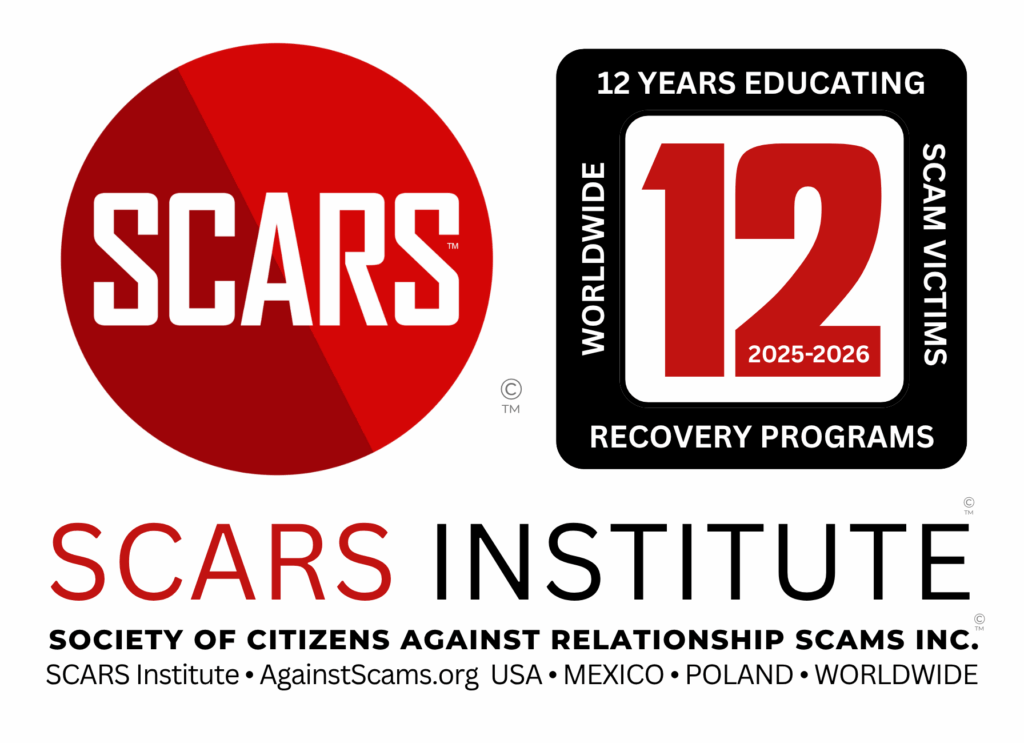
The Two Types of Trust and Their Impact on Scam Victims During and After a Relationship Scam
Trust After Betrayal and Understanding Two Kinds of Trust and How Recovery Begins
Primary Category: Psychology of Scams and Recovery
Author:
• Tim McGuinness, Ph.D., DFin, MCPO, MAnth – Anthropologist, Scientist, Polymath, Director of the Society of Citizens Against Relationship Scams Inc.
Author Biographies Below
About This Article
After a relationship scam, trust can feel broken in every direction, yet it can be rebuilt with clear language, steady habits, and calm pacing. Signals such as love-bombing, secrecy framing, urgency, and isolation point to risk, while two-channel verification, boundary setting, and a simple recovery log restore control. Short phrases maintain dignity in hard moments, and routine care for sleep, food, movement, and daylight supports clearer thinking. Records, police report numbers, and coordination with banks strengthen financial steps. Family and peer support work best with consent, privacy, and one small action at a time. Progress often looks ordinary, with fewer late-night spirals, faster pauses before decisions, and growing comfort with verification. Measured steps rebuild self-trust first, then safer trust in others.
Note: This article is intended for informational purposes and does not replace professional medical advice. If you are experiencing distress, please consult a qualified mental health professional.

Trust After Betrayal and Understanding Two Kinds of Trust and How Recovery Begins
Trust carries people through daily life, relationships, and decisions. After a relationship scam, trust may feel broken in every direction. That feeling makes sense, and it has a structure that can be understood and rebuilt. Two kinds of trust sit at the center of this work. One kind points outward toward another person. The other points inward toward one’s own judgment and signals. Learning how these two kinds of trust formed during the scam, and how they can form again during recovery, often brings steadier ground, calmer choices, and a clearer next step.
What Trust Means In Real Life
Trust means a willingness to accept some risk because a person or process seems reliable. It rests on a simple belief: promises will be kept, and harm will not be intentional. In relationships, trust begins as a picture in the mind, then becomes a habit of attention and choice. Emotional trust often arrives faster than proof, while practical trust grows from consistent action over time. Both are normal parts of human connection, and both were targeted by the criminal who staged the relationship.
Two Core Forms Of Trust
Two forms of trust explain much of what happened and much of what helps now.
Trust in the other person. This is outward-facing trust. It forms when another person appears consistent, kind, and safe. Early signs often include quick responsiveness, shared details, and gestures that look generous. Over time, people usually ask for small proofs, notice follow-through, and adjust closeness accordingly. In a staged relationship, criminals imitate these signals and try to speed the process.
Trust in oneself. This is inward-facing trust. It includes belief in one’s own perception, memory, and boundaries. It sounds like “the facts I notice matter,” “my questions are valid,” and “my pace counts.” Self-trust does not require perfection. It asks for attention to early signals and respect for a pause when something feels misaligned. During a scam, self-trust often got quieter under pressure, and that was intentional on the criminal’s part.
How Trust In A Stranger Took Hold
Relationship scams use recognizable steps that activate outward trust. The pattern often includes:
- Love-bombing or intense attention early in contact. Constant messages and praise may feel like proof of care.
- Mirrored interests and values. Details are repeated back to create a sense of rare compatibility.
- Borrowed authority. Photos, uniforms, company names, or invented credentials provide a surface that looks official.
- Incremental disclosures. A few personal facts, whether true or false, invite matching closeness.
- Engineered vulnerability. A crisis appears at a key moment. This could be a family issue, a travel problem, or a bank “error.” The story invites help and deepens commitment.
Each step signals that the other person is safe, then redirects doubts away from verification. Outward trust grows around the story, not around the evidence. The mind treats the pattern as proof, because in ordinary life these signals often belong to real care.
How Self-Trust Went Quiet
Self-trust did not fail. It was targeted. Staged relationships use pressure and confusion to pull attention away from internal signals. Common tactics include:
- Urgency. Requests carry tight deadlines that reduce time to think.
- Secrecy. The criminal frames privacy as romance, security, or professional duty.
- Isolation. Friends or family who ask questions get described as unsupportive or jealous.
- Emotional flooding. High emotion replaces careful discussion, and the nervous system goes into alarm.
When the body feels stressed, focus narrows to the relationship and the threat described by the criminal. Self-trust turns down its volume to survive the moment. That is not a flaw. That is a stress response, and it changes with time, care, and structure.
How Scammers Engineer Trust on Purpose
Criminals study human trust the way a stage actor studies cues. They combine social engineering, stolen identities, and rehearsed scripts. A few design choices appear across cases:
- They create a credible frame. Job roles, uniforms, and invented companies supply a context where authority is expected.
- They seed “proofs” that are hard to check. Screenshots, video loops, or doctored documents reduce opportunities for quick verification.
- They ask for small commitments first. A minor favor or a simple request makes later requests seem natural.
- They reset boundaries through emotion. When questions arise, the response is often flattery, anger, or guilt rather than a clear answer.
Understanding that this was an industrial script, not a private romance, helps separate personal worth from criminal manipulation.
Spotting Trust Drift During Recovery
Recovery begins to stabilize when trust drift becomes visible in daily life. Trust drift means that attention slides away from facts and toward emotion or habit. Helpful signals of drift include:
- A story changes slightly each time it is told, yet the commitment demanded grows.
- Payment, credentials, or identity proofs move off-platform, away from published channels.
- A deadline appears that prevents a normal verification step.
- Long explanations replace short answers to simple questions.
Responses improve when these signals trigger a pause, a neutral question, or a move to a safer channel.
Rebuilding Self-Trust in Daily Practice
Self-trust grows through small, repeatable actions. The body and mind learn that care is consistent, and decision skills start to feel reliable again. Many survivors use steps like these:
- Name what the body is doing. Acknowledge a fast heartbeat or a tight jaw, then breathe slowly for a minute. This often lowers arousal and gives the thinking mind more space.
- Use a written cue-and-response. A cue might be “urgent request,” and the matching response might be “pause and verify tomorrow.” Writing helps the plan appear during stress.
- Keep decisions small and time-limited. A choice about a single call or a single bill is easier than a choice about the entire future. Small wins add up and teach the brain that judgment works.
- Prefer two-channel checks for money, identity, and emotion. One channel is the message that arrived. A second channel is a phone number on a public website, a face-to-face check, or a direct visit to an office. Repetition builds confidence.
- Record outcomes. A short notebook with dates, actions, and results creates a private proof of competence. Reviewing the notes reinforces self-trust and counters shame.
Relearning Other-Directed Trust with Boundaries
Outward trust becomes healthier when it grows in a container of clear rules. A few boundary patterns protect relationships without closing life off:
- Match intimacy to verification. Personal details, photos, and money do not move until identity, location, and purpose are confirmed through independent sources.
- Set a pace. New closeness follows a calendar, not a rush. A steady pace helps real care feel safe and shows whether actions match words.
- Keep money and love separate. Emotional support does not require transfers, gift cards, or crypto. When money is involved, neutral procedures, receipts, and second-channel checks protect everyone.
- Invite sunlight. Real partners and real friends tolerate appropriate questions and visibility. If a relationship cannot bear light, the container may not be safe.
Working with Your Nervous System
Trust lives in the body as much as in the mind. After a scam, alarms can ring suddenly, or numbness may settle in. Simple practices often help attention and mood:
- Sleep and daylight. Consistent sleep and a morning walk strengthen focus and reduce reactivity.
- Rhythm and food. Regular meals and hydration help stabilize energy and mood.
- Movement. Short walks, gentle stretching, or light exercise release stress and improve sleep.
- Screens and timing. Limiting late-night contact with scam content often reduces spirals of anxiety.
These steps support the same brain systems that underlie judgment and self-trust. Care for the body is not separate from care for the mind.
Practical Phrases For Common Moments
When trust is rebuilding, words can feel slippery. Short true phrases help steady the moment.
- For a new contact who moves fast: “The pace feels quick. A slower schedule works better.”
- For any request for secrecy: “Safe relationships tolerate appropriate transparency.”
- For a money-related request: “Money moves only after identity is verified through a public channel.”
- For mixed signals: “The story and the evidence do not match. More time is needed.”
- For a family member who worries: “Concern is heard. A plan to verify will be used tomorrow.”
Scripts provide a bridge between emotion and action. Repeating one script, not twenty, often works best.
Boundaries and Verification as Care
Boundaries sometimes get mistaken for hostility. In healthy practice, boundaries act as care for self and others. A few examples show the tone:
- Verification is normal. Calling a bank on a publicly listed number protects every customer.
- Pace is normal. Real intimacy develops with time, shared activities, and consistent respect.
- Documentation is normal. Receipts, contracts, and acknowledgments protect parties on both sides.
- Silence is normal. A pause to think supports better choices and prevents harm.
Framing boundaries as care helps remove stigma and makes their use feel natural.
Social and Institutional Trust After a Scam
Trust in institutions may also feel damaged. Banks, platforms, and police may have limits that become visible only after a loss. Recovery does not depend on perfect systems. It depends on understanding what these systems can and cannot do, then using them well. A few realities help:
- Banks can attempt recalls on wires and returns on certain transfers, especially when contacted quickly.
- Police reports create a documented record, which supports financial disputes and future investigations.
- Consumer protection agencies and national reporting portals collect patterns and contribute to takedowns.
- Support services help with sleep, anxiety, and grief, which improves decision quality.
Trust in institutions becomes more accurate when expectations match the available tools. Accurate expectations reduce shock and help direct energy to steps that matter.
Family and Peer Support that Respects Autonomy
- Kind support speeds healing. Friends and family can help without pressure when they use clear, respectful language. Helpful moves include:
- Offer time and presence rather than demands. A calm meal or a quiet walk often helps more than a lecture.
- Ask for permission before offering information. Consent keeps the survivor in control.
- Focus on one step. A bank call or a password reset today may be enough.
- Avoid blame. Emphasize that professional criminals used rehearsed tactics and that this was a crime.
- Invite professional help without force. Short-term counseling often calms the nervous system and restores sleep.
Support that honors autonomy strengthens self-trust, which in turn improves outward trust.
Measuring Progress without Harsh Self-Judgment
- Progress often looks ordinary. Helpful indicators include:
- A shorter time from early doubt to a protective action.
- Fewer late-night spirals and more steady sleep.
- A consistent two-channel verification habit for money and identity.
- Less interest in the criminal’s story and more interest in daily routines.
- A growing sense of relief when boundaries are used.
- Progress measured in small, steady changes often outlasts bursts of willpower.
Common Myths and Simple Reframes
A few myths tend to slow recovery. Clear reframes help.
- Myth: “Smart people do not get scammed.”
Reframe: Trained criminals exploit normal human wiring. Intelligence does not remove human wiring. - Myth: “A quick video chat proves identity.”
Reframe: Identity rests on verified records, not on images that can be copied or staged. - Myth: “The bank will catch it.”
Reframe: Banks help when possible, yet money moves quickly. Early calls give the best chance of recovery. - Myth: “Healing means trusting people again right away.”
Reframe: Healing begins with self-trust. Outward trust grows at a pace that feels safe and supported by evidence. - When Professional Help Helps
Short-term, trauma-informed counseling can ease sleep problems, reduce intrusive thoughts, and restore concentration. Financial counseling can organize steps for disputes and budgeting after a loss. Legal advice may clarify options when threats or extortion appear. These forms of support work alongside family care and self-care. Asking for help reflects wisdom, not weakness.
A Simple, Repeatable Framework
A compact framework keeps the work practical:
- Pause the contact. Silence lowers pressure and clears space.
- Verify through a second channel. Phones, public records, or in-person checks supply independent facts.
- Protect money paths. Alerts, holds, and bank recalls reduce loss.
- Record actions. Notes create private evidence of progress.
- Return to routine. Sleep, food, movement, and sunlight rebuild the systems that support good judgment.
Applied consistently, this framework rebuilds both kinds of trust with less drama and more steadiness.
Learning From The Mistake Without Accepting Blame
Criminals committed a crime. That truth stands first. A personal mistake also occurred: trusting a stranger with unverified claims, then assuming trustworthiness without matching evidence. Owning the mistake does not erase the crime. It simply gives control back to the person who was harmed. With control comes choice, and with choice comes a path that feels safer and more honest.
Conclusion
Trust after a relationship scam may feel like scorched ground. In time, new growth returns, and the path becomes clearer. Two kinds of trust guide the way. Outward trust now moves at a slower pace, tied to visible proof and steady behavior. Inward trust grows from small acts of care, two-channel checks, and routines that calm the body. This is patient work. Each quiet action teaches the nervous system that safety is possible, and each well-placed boundary makes space for relationships that deserve to last. The mistake that happened can become the lesson that protects, and the voice inside can become the compass that leads forward.

Glossary
- Alarm Response — This term refers to the body’s surge of stress when a threat feels immediate. Heart rate, breathing, and attention may spike, which narrows thinking and pushes quick choices. Recognizing this state lets a person pause and lower arousal before deciding.
- Borrowed Authority — This tactic uses uniforms, job titles, or brand names to look official. The appearance of status substitutes for proof and speeds trust. Verifying the role through a public source breaks the spell.
- Boundary Setting — This practice defines what information, money, or time is shared and when. Clear boundaries protect recovery and relationships by setting fair limits. A simple, calm “not yet” often keeps decisions safe.
- Breathing Pause — This is a short period of slow breathing to reduce stress before acting. One minute of steady inhales and exhales often restores clearer thinking. It pairs well with a plan to verify later.
- Consumer Protection Agency — This describes a government body that collects fraud reports and patterns. Filing reports supports investigations and future takedowns. Case numbers also help with bank disputes.
- Cue-and-Response Plan — This is a written pairing of a trigger and a matching action. An example pairs “urgent request” with “pause and verify tomorrow.” Writing the plan helps it appear under pressure.
- Decision Pacing — This means matching the speed of a choice to its risk. Slower timing for money or identity decisions protects judgment. A calendar can anchor the pace.
- Documentation as Proof — This refers to saved emails, receipts, screenshots, and notes. Records create a private evidence trail that supports disputes and shows progress. Organized files reduce confusion and self-doubt.
- Emotional Flooding — This state occurs when strong feelings overwhelm careful thought. Criminals often trigger it to derail questions. Brief grounding and a time-out restore balance.
- Engineered Vulnerability — This tactic introduces a staged crisis to push commitment. The story may involve health, travel, or bank problems. Independent checks usually expose the fiction.
- Evidence Mismatch — This describes a gap between a story and available facts. Repeated changes, missing proof, or a blocked verification signal risk. A mismatch deserves a pause, not a rationalization.
- Family Support with Consent — This approach invites help while preserving autonomy. Loved ones ask permission before offering information and focus on one step. Respectful support strengthens self-trust.
- Framework for Safety — This is a compact routine that guides action after harm. The steps include pause, verify through a second channel, protect money paths, record actions, and return to routine. Repetition makes the framework dependable.
- Grounding Routine — This is a simple sequence that steadies the body and mind. Common elements include breath, posture, and noticing surroundings. Grounding supports sound choices.
- Healthy Pace — This refers to a measured speed of relationship or financial steps. Real care shows up across time, not in a rush. A steady pace reveals whether actions match words.
- Hydration and Food — This pair supports energy and mood during recovery. Regular meals and water improve sleep and attention. Better physiology supports better judgment.
- Incremental Disclosures — This method shares small personal details to gain matching trust. In scams, details may be invented or stolen. Verification prevents false closeness.
- Institutional Trust — This describes the level of confidence placed in banks, platforms, or police. Accurate expectations reduce frustration and guide useful requests. Tools work best when their limits are understood.
- Isolation Tactic — This move discourages contact with friends or family who ask questions. The goal is to remove outside checks. Naming the tactic helps keep support close.
- Love-Bombing — This is a surge of praise, attention, and promises early in contact. It feels like proof of care, but functions as pressure. Time and verification separate real care from staging.
- Money and Love Separation — This principle keeps financial transfers apart from emotional support. Caring words never require gift cards, crypto, or urgent wires. Neutral procedures protect all parties.
- Movement Break — This is a daylight activity that reduces stress and improves sleep. Short walks or stretching help reset mood and attention. A calmer body supports clearer choices.
- Myth Reframe — This replaces a harmful belief with a factual statement that guides action. For example, “intelligence prevents scams” becomes “criminal scripts target normal human wiring.” The reframe supports dignity and safety.
- Nervous System Care — This refers to habits that calm physiological stress. Sleep, daylight, movement, and routine often help. A regulated body makes verification easier.
- Outward Trust — This is confidence placed in another person’s reliability. In healthy practice, it grows from consistent actions and independent proof. In scams, signals are imitated to rush that growth.
- Peer Support — This means contact with others who understand betrayal trauma. Safe groups or moderated spaces reduce isolation and share practical steps. Consent and privacy remain central.
- Police Report Record — This is an official report filed with local law enforcement. It creates a case number and a documented timeline. The record supports bank claims and future investigations.
- Practical Phrases — These are short, calm sentences that hold a boundary. Examples include “the pace feels quick” and “money moves only after verification.” Scripts reduce pressure in the moment.
- Recovery Log — This is a simple notebook or file that lists dates, calls, and actions. The log shows progress and supplies details for disputes. Reviewing entries reinforces self-trust.
- Reframing Blame — This process separates personal worth from the crime. The criminal chose the harm, and a human made a fixable mistake. The reframe opens space for learning without shame.
- Secrecy Framing — This tactic labels privacy as romance, security, or duty to block questions. It aims to hide facts and prevent verification. Calling a public number defeats the frame.
- Self-Trust — This is confidence in one’s perception, memory, and pace. It grows from small wins and consistent verification habits. Strong self-trust reduces re-victimization risk.
- Silence as a Tool — This is a deliberate pause that lowers pressure before deciding. Quiet time allows the plan to surface and facts to be checked. Silence protects attention.
- Social Engineering — This is a set of techniques that manipulate normal social cues. Criminals use urgency, authority, and reciprocity to steer choices. Independent checks cut through the pressure.
- Sunlight Test — This test asks whether a relationship can tolerate appropriate visibility. Will names, roles, and contact channels stand in public view. Safe ties pass the test.
- Trust Drift — This describes the slide from fact-based checks toward emotion or habit. Signs include deadline pressure, longer stories, and off-platform requests. Noticing drift prompts a pause.
- Two-Channel Verification — This method confirms money or identity through a second independent route. One route is the message received, and the other is a public phone number, in-person check, or published record. The method catches staged instructions.
- Urgency Cue — This is a short deadline that removes time to think. The cue signals a switch to slow timing and outside verification. Pressure is a risk sign, not a proof of care.
- Verification Call — This is a phone call to a number found on a public source to confirm instructions. The call confirms identity, role, and payment details. A single mismatch stops the transaction.
References
- Freyd, J. J. (1996), Betrayal Trauma resources (University of Oregon): https://dynamic.uoregon.edu/jjf/defineBT.html
- Mayer, R. C., Davis, J. H., and Schoorman, F. D. (1995), “An integrative model of organizational trust” (DOI): https://doi.org/10.5465/amr.1995.9508080335
- World Health Organization, Doing What Matters in Times of Stress (illustrated guide): https://www.who.int/publications/i/item/9789240003927
Author Biographies
Please Rate This Article
Please Leave Us Your Comment Below
Also, tell us of any topics we might have missed.
-/ 30 /-
What do you think about this?
Please share your thoughts in a comment above!
ARTICLE RATING
TABLE OF CONTENTS
CATEGORIES
U.S. & Canada Suicide Lifeline 988
![NavyLogo@4x-81[1] The Two Types of Trust and Their Impact on Scam Victims During and After a Relationship Scam - 2025](https://scamsnow.com/wp-content/uploads/2025/04/NavyLogo@4x-811.png)
ARTICLE META
Important Information for New Scam Victims
- Please visit www.ScamVictimsSupport.org – a SCARS Website for New Scam Victims & Sextortion Victims.
- SCARS Institute now offers its free, safe, and private Scam Survivor’s Support Community at www.SCARScommunity.org – this is not on a social media platform, it is our own safe & secure platform created by the SCARS Institute especially for scam victims & survivors.
- SCARS Institute now offers a free recovery learning program at www.SCARSeducation.org.
- Please visit www.ScamPsychology.org – to more fully understand the psychological concepts involved in scams and scam victim recovery.
If you are looking for local trauma counselors, please visit counseling.AgainstScams.org
If you need to speak with someone now, you can dial 988 or find phone numbers for crisis hotlines all around the world here: www.opencounseling.com/suicide-hotlines
Statement About Victim Blaming
Some of our articles discuss various aspects of victims. This is both about better understanding victims (the science of victimology) and their behaviors and psychology. This helps us to educate victims/survivors about why these crimes happened and not to blame themselves, better develop recovery programs, and help victims avoid scams in the future. At times, this may sound like blaming the victim, but it does not blame scam victims; we are simply explaining the hows and whys of the experience victims have.
These articles, about the Psychology of Scams or Victim Psychology – meaning that all humans have psychological or cognitive characteristics in common that can either be exploited or work against us – help us all to understand the unique challenges victims face before, during, and after scams, fraud, or cybercrimes. These sometimes talk about some of the vulnerabilities the scammers exploit. Victims rarely have control of them or are even aware of them, until something like a scam happens, and then they can learn how their mind works and how to overcome these mechanisms.
Articles like these help victims and others understand these processes and how to help prevent them from being exploited again or to help them recover more easily by understanding their post-scam behaviors. Learn more about the Psychology of Scams at www.ScamPsychology.org
SCARS INSTITUTE RESOURCES:
If You Have Been Victimized By A Scam Or Cybercrime
♦ If you are a victim of scams, go to www.ScamVictimsSupport.org for real knowledge and help
♦ SCARS Institute now offers its free, safe, and private Scam Survivor’s Support Community at www.SCARScommunity.org – this is not on a social media platform, it is our own safe & secure platform created by the SCARS Institute especially for scam victims & survivors.
♦ Enroll in SCARS Scam Survivor’s School now at www.SCARSeducation.org
♦ To report criminals, visit https://reporting.AgainstScams.org – we will NEVER give your data to money recovery companies like some do!
♦ Follow us and find our podcasts, webinars, and helpful videos on YouTube: https://www.youtube.com/@RomancescamsNowcom
♦ Learn about the Psychology of Scams at www.ScamPsychology.org
♦ Dig deeper into the reality of scams, fraud, and cybercrime at www.ScamsNOW.com and www.RomanceScamsNOW.com
♦ Scam Survivor’s Stories: www.ScamSurvivorStories.org
♦ For Scam Victim Advocates visit www.ScamVictimsAdvocates.org
♦ See more scammer photos on www.ScammerPhotos.com
You can also find the SCARS Institute’s knowledge and information on Facebook, Instagram, X, LinkedIn, and TruthSocial
Psychology Disclaimer:
All articles about psychology and the human brain on this website are for information & education only
The information provided in this and other SCARS articles are intended for educational and self-help purposes only and should not be construed as a substitute for professional therapy or counseling.
Note about Mindfulness: Mindfulness practices have the potential to create psychological distress for some individuals. Please consult a mental health professional or experienced meditation instructor for guidance should you encounter difficulties.
While any self-help techniques outlined herein may be beneficial for scam victims seeking to recover from their experience and move towards recovery, it is important to consult with a qualified mental health professional before initiating any course of action. Each individual’s experience and needs are unique, and what works for one person may not be suitable for another.
Additionally, any approach may not be appropriate for individuals with certain pre-existing mental health conditions or trauma histories. It is advisable to seek guidance from a licensed therapist or counselor who can provide personalized support, guidance, and treatment tailored to your specific needs.
If you are experiencing significant distress or emotional difficulties related to a scam or other traumatic event, please consult your doctor or mental health provider for appropriate care and support.
Also read our SCARS Institute Statement about Professional Care for Scam Victims – click here
If you are in crisis, feeling desperate, or in despair, please call 988 or your local crisis hotline.
More ScamsNOW.com Articles
A Question of Trust
At the SCARS Institute, we invite you to do your own research on the topics we speak about and publish. Our team investigates the subject being discussed, especially when it comes to understanding the scam victims-survivors’ experience. You can do Google searches, but in many cases, you will have to wade through scientific papers and studies. However, remember that biases and perspectives matter and influence the outcome. Regardless, we encourage you to explore these topics as thoroughly as you can for your own awareness.























![scars-institute[1] The Two Types of Trust and Their Impact on Scam Victims During and After a Relationship Scam - 2025](https://scamsnow.com/wp-content/uploads/2025/04/scars-institute1.png)
![niprc1.png1_-150×1501-1[1] The Two Types of Trust and Their Impact on Scam Victims During and After a Relationship Scam - 2025](https://scamsnow.com/wp-content/uploads/2025/04/niprc1.png1_-150x1501-11.webp)
